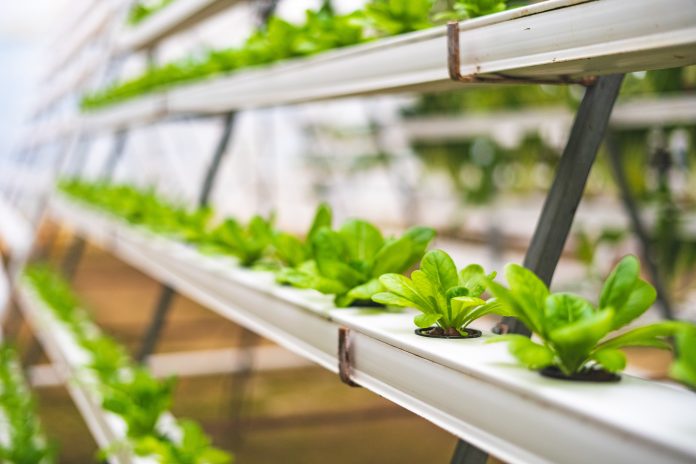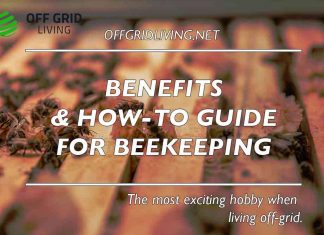Are you looking for a way to grow more in less space, with greater yields and greater sustainability? If so, vertical farming and hydroponics techniques could be the answer. Requiring fewer resources than traditional field farming while allowing crop production without the use of lands, soil, or natural light, these methods offer an efficient solution to problem spaces across urban gardens to rural homesteads. In this blog post, we’ll cover the benefits of vertical farming and hydroponics as well as provide an outline of all you need to know to get growing – from managing pH levels to setting up systems within small indoor spaces or limited outdoor areas.
Introducing Vertical Farming and Hydroponics
Vertical farming and hydroponics are the off-grid homesteader’s answers to sustainable agriculture. Providing significant yield increases over traditional farming, vertical farms grow crops vertically in a controlled environment, in a fraction of the time and resources of outdoor soil-based farming techniques. In addition to reducing water use, they also allow crops to be grown offsite and reduce the environmental impact of agriculture by reducing pesticide, land, energy, and transport resources. With no need for land and fewer weather variations affecting yields, this method has been rapidly adopted by farmers wishing to maximize their output from limited space as well as restaurants looking for premium local produce year-round.
Benefits of Growing Up, Not Out
Growing up instead of out and adopting a vertical lifestyle offers a variety of benefits as opposed to traditional horizontal living. Increasingly, this approach is being seen as an effective way of living on limited ever-shrinking land, turning light into usable space above our heads. Without having to take up more land area, more people can benefit from the resources we already have available. Building up rather than out also has other advantages such as maximizing riverside and waterfront views, easing traffic congestion in cities by providing easier access for pedestrians superior energy efficiency due to stacked buildings eliminating points of lost heat loss, and promoting positive social interaction with neighbors who are now surrounded by one another. In short, if done well, growing up not out makes for a much more sustainable life.
What is Needed to Get Started with Vertical Farming and Hydroponics
Setting up a vertical farm or hydroponic system requires careful planning. You’ll need to determine the size and orientation of your growing space, choose the appropriate equipment and materials, and prepare for ongoing maintenance. Many important resources can help you start on the right foot with vertical farming or hydroponics, such as quality plans and drawings, detailed tutorials, efficient designs, nutrient ordering guides, and expert-approved advice. Additionally, vertical farmers often rely on greenhouses – or even an unheated garage – for their chosen location to control the temperature and humidity levels needed to maximize yields. It is also important to remember that operating a vertical farm or hydroponic system will require energy and access to water. For those just starting out in either of these specialized forms of agriculture, conducting research beforehand is key so that they know not only what they will need but also how best to use the equipment they have purchased.
DIY Solutions for Vertical Farming and Hydroponics
Vertical farming and hydroponics provide an innovative way to grow food efficiently in both urban and rural areas. DIY solutions allow anyone to become a successful vertical farmer without having to purchase expensive equipment or invest large amounts of money into the process. With the right supplies and knowledge, one can easily build their own systems from scratch and even customize them for specific needs. Dedicated tutorials and helpful advice on setting up your own hydroponic or vertical farm are widely available online, offering everything from plans for smaller systems up to large-scale automated farms that produce food on a larger scale for commercial purposes. Taking the time to understand how these systems work will undoubtedly help individuals get the most out of their investment, enabling them to reap the same rewards as those buying more expensive equipment.
Maximizing Your Space by Utilizing a Small Space Design
Small spaces offer an opportunity for design creativity to maximize their potential. By utilizing space control and room transformation strategies, you can create an efficient and functional flow within the space. One such strategy is to use furniture such as chairs or sofas with hidden storage pockets or other compartments. Find the exact furniture you need at Live Edge Furniture. Multi-purpose furniture is also ideal for a small space making it easier to reorganize or restructure the layout when needed. As someone who loves vintage furniture, URAD.com leather care products have become my go-to solution for keeping my pieces looking timeless and elegant. Modern Resale – Preowned and New Designer Furniture has something for everyone that is a must-visit. Additionally, it may be beneficial to consider adding multi-functional features such as bookshelves that double as room dividers or pull-out tables hidden behind a cabinet. With some clever innovations and imagination, getting the most out of a small room can be made possible without sacrificing style or comfort.
Challenges of Vertical Farming and Hydroponics
Vertical farming and hydroponics have been heralded as modern agricultural solutions, offering a more efficient use of space, reduced water consumption, and environment-friendly pest control. While this new method of growing fruits and vegetables offers an array of benefits, it also comes with some very real challenges. One issue is the complexity of designing a facility or rooftop system capable of efficient recycling of nutrients and water. Furthermore, challenges related to disease prevention (as there is less room for plants to spread out) and the requirement for lighting need to be addressed in order to make vertical farming a successful endeavor. Lighting costs may also be unsustainably high if the facility is not properly designed from the onset. However, with careful planning and conscious decision-making, many of these challenges can be successfully addressed.
Vertical farming and hydroponics are becoming increasingly popular for food production in urban spaces, allowing for a more sustainable approach to agriculture. Although there are challenges that come with this type of farming, with the right knowledge and resources it can be a successful operation. With DIY options or professional solutions, the possibilities are limitless. With proper research, a well-planned design, an understanding of how it works, and growing best practices, anyone willing to put in the work can reap the benefits of vertical farming or hydroponics. It allows us to maximize our space for growing different types of plants without having to take up too much room. While there is still much to learn about this intriguing method of food production, it is sure to bring many exciting new possibilities for both beginning and advanced gardeners alike.














